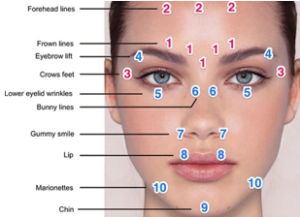Botox for TMJ Treatment
If you have chronic jaw pain, headaches, earaches and facial pain it could be related to clenching and grinding of your teeth. Temporo-mandibular joint dysfunction (TMJD) is a common condition affecting all age groups. Over the years dentistry has offered helpful treatments including occlusal(bite) adjustments and fabrication of oral appliances (night guards). We now have another tool to help fight this painful condition; Botox!
TMJD Causes:
There is no known single cause for TMJD. This disorder is usually a combination of some of the following conditions:
- Displacement of the joint disk
- Bruxism (grinding and clenching of the teeth)
- Malocclusion (misalignment of the bite)
- Wear and tear of the teeth (attrition)
- Jaw injury
- Arthritis
How does botox help treat TMJD?
Botox has been used in cosmetics for many years to help reduce visible skin wrinkles. When injected into the superficial muscles of the face, Botox relaxes these muscles which prevents them from pulling on the skin causing wrinkles. In the same way that this treatment can stop movement in the muscles that cause lines and wrinkles, it can also stop movement in the muscles associated with TMJD. For many patients, Botox relieves jaw tension and alleviates a number of the following related symptoms:
- Jaw pain
- Headaches
- Facial pain
- Ear aches
- Tinnitus (ringing in the ears)
- Neck and shoulder pain
- Tooth aches
Botox Treatment:
Botox treatment can be completed in our office in about 30 minutes. Dr. Beck will inject directly into the affected muscles. For TMJD this is typically the masseter, temporalis and frontalis. Most patients describe this feeling as a brief “pin prick”.
Following Botox treatment, muscle tenderness will begin to diminish within 24 to 48 hours with a peak effect taking up to 14 days to reach. You can expect slight redness, numbness or bruise around the injection sites. These side effects will fade over a few days. It is very important that you don’t rub or massage the areas for the first couple of days. This will keep the Botox from spreading to other areas. To maintain the results of your treatment, Botox typically needs to be re-administered over three to six months.
If you suffer from TMJD and would like to discuss options for relief, please call our offices and schedule a consultation appointment with Dr. Beck.

